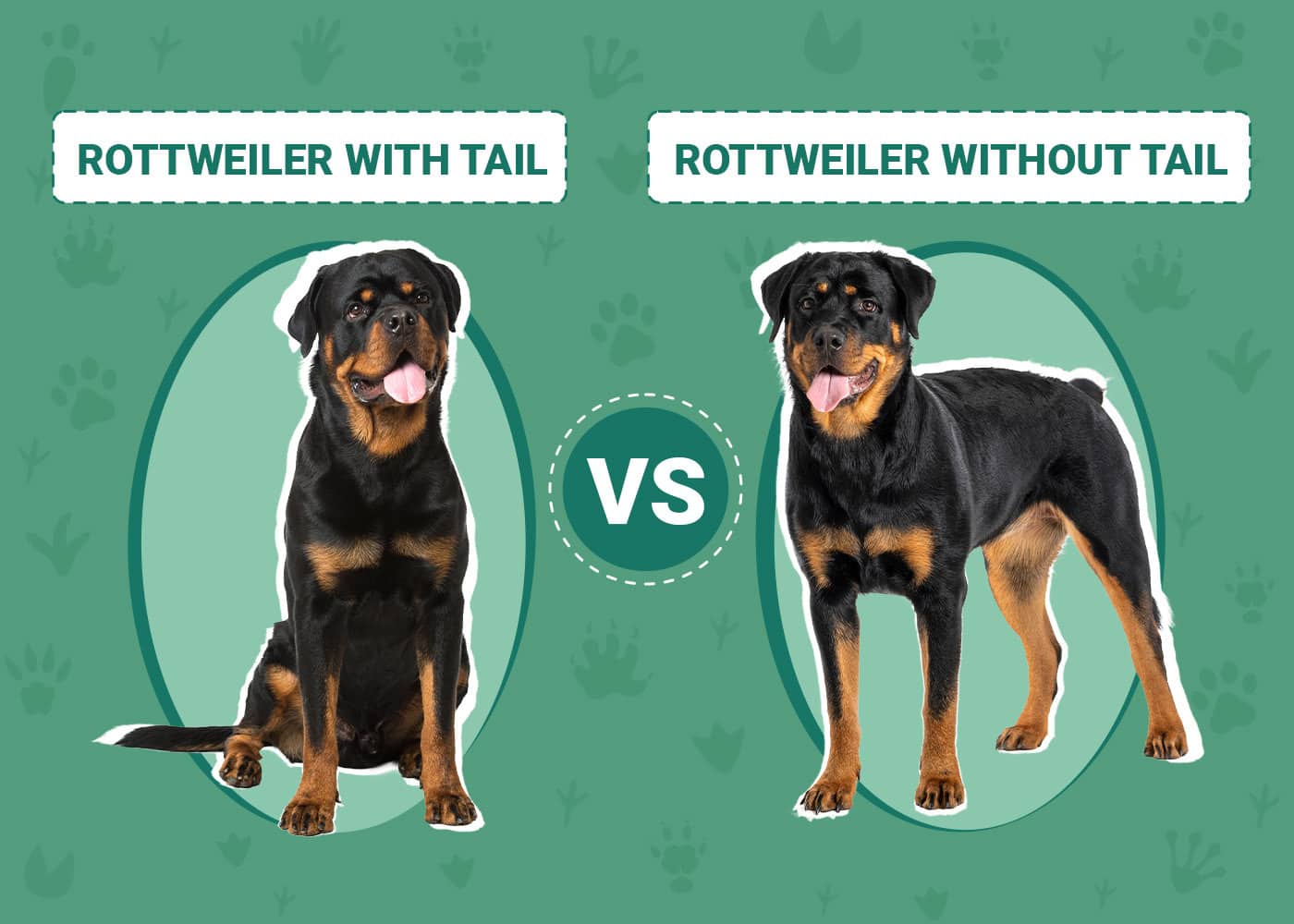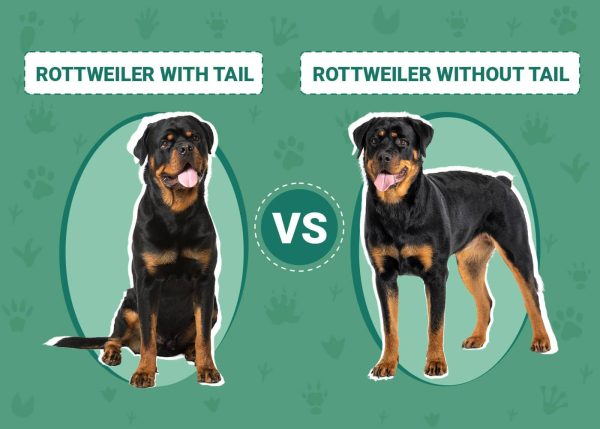The debate of whether to dock a Rottweiler’s tail or not is a heated one. Proponents say that it improves agility or speed, and tails were originally docked on some working dog breeds, including the Rottweiler, to prevent it from becoming injured.
The most common reason it is done today is to conform with kennel club standards and as an aesthetic choice. Opponents say that it is inhumane but also that it is unnecessary because it makes no difference to athletic performance. Tail docking is not illegal, and you will see examples of Rotties with and without tails, but it should be done professionally by a vet if you do deem it necessary in the first place.
It is also worth noting that the American Kennel Club (AKC) expects it of the breed, and while not all kennel clubs do, it can be difficult to win breed shows and exhibitions with an intact tail.
Disclaimer: Dogster does not endorse the practice of tail docking. This article is for informative use only.

Why People Dock Tails
Historically, Rottweilers had their tails docked to prevent injuries. They were bred as working dogs and were commonly used to pull carts. It is possible that the tail, protruding from the back of the dog and under the cart, could have become entwined with the wheels or caught in the cart and injured.
Today, however, people dock Rottie tails for different reasons. Owners claim that it helps improve the speed or the agility or athleticism of their dog. Others do it for aesthetic purposes, and some people may dock tails because it is inconvenient and can hurt when wagged.

What Opponents Say
Opponents to tail docking state that there is no physical or athletic benefit to docking a tail. Dogs still run at the same speed and are just as fleet of foot with a docked tail as they are with no tail.
Tail docking is considered inhumane by some. The procedure is usually carried out when a puppy is a few days old. It is sometimes done using a tight rubber band, which cuts off circulation, effectively killing that part of the body. Even at this age, puppies have an operational nervous system, which means that they can feel the pain of the tail being removed.
The procedure may also be completed by a professional veterinarian who will surgically remove the tail.
Another factor to consider is how a dog typically uses its tail. The tail is used to communicate with other dogs, showing whether a dog is friendly, aggressive, or playful. Dogs also use their tails to communicate with humans in a similar way. Docking the tail means that the dog is unable to communicate as effectively.

What The Kennel Club Says
The American Kennel Club is responsible for setting the standards of different breeds and a dog must conform to these standards to be registered. They say that the club “recognizes that ear cropping, tail docking, and dewclaw removal, as described in certain breed standards, are acceptable practices integral to defining and preserving breed character and/or enhancing good health.” With the added caveat that “appropriate veterinary care should be provided.”

Should a Rottweiler Have a Tail?
Tail docking is considered cruel. It causes pain to a dog when they are a young puppy and, what’s more, it can lead to some health problems and physical complaints such as a chronic neuroma forming at the docking site. Although there are some occasions when there is a therapeutic need to dock a tail, when it isn’t necessary, the dog will usually benefit from being left with a natural tail.
Is Rottweiler Tail Docking Illegal?
Tail docking is legal in the USA, and the AKC does encourage the practice by excluding Rotties with natural tails. However, it is illegal in some countries. In the UK, it was outlawed in 2007, although working dogs can still be docked, if the vet performing the procedure is shown working papers. You should check the legal position in your country if you are considering having your dog’s tail removed.

Is Docking a Dog’s Tail Cruel?
While the AKC might approve of tail docking, most vets do not.
The American Veterinary Medical Association wants to see docked tails removed from breed standards and they state that they are opposed to the practice when it is completed purely for cosmetic purposes and when there is no therapeutic or medical benefit to doing so.
The British Veterinary Association describes it as an “outdated practice” and they want it banned for all breeds of dogs, not just non-working breeds.
Should I Buy a Dog With a Docked Tail?
It is legal to own a dog with a docked tail in the USA. Therefore, it is legal to buy one. However, if you do not agree with the procedure, buying a dog with a docked tail from a breeder may encourage them to continue docking because there is a demand for docked dogs. If the dog is in a shelter or rescue, this isn’t a concern. Ultimately, it comes down to whether you agree with tail docking or not.

Conclusion
The Rottweiler can make a good family pet but is also still used as a working dog. You will likely have seen docked Rottweilers, as well as those with their natural tail. The procedure is legal in the USA and is most often carried out for cosmetic purposes or to conform with AKC standards for showing and exhibiting. However, opponents say that it is inhumane, causes pain to the puppy, and can lead to infection and other physical problems around the docking site.
- You may also be interested in: To Dock Or Not To Dock a Rottweiler’s Tail? (Legality, Ethics, Behavior)
Featured Image Credit: (L) Dora Zett, Shutterstock | (R) Elayne Massaini, Shutterstock








